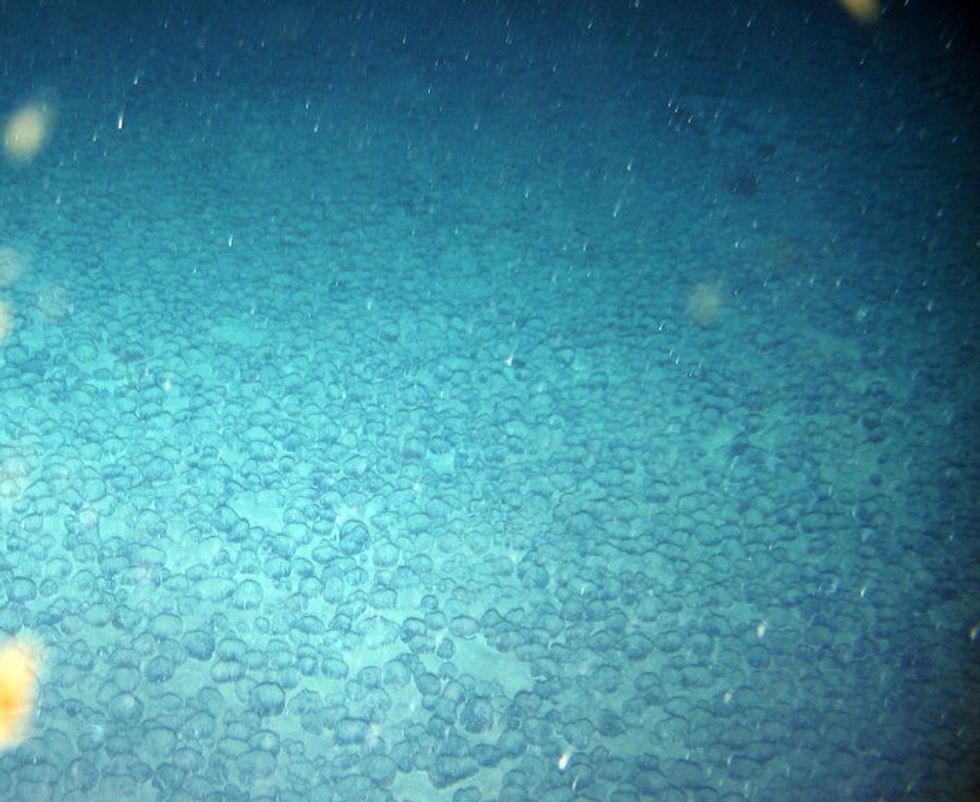
The cameras in the epibenthic sled show that the manganese nodules at the site are closely packed on the sea floor of the Atlantic. (Photo credit: Nils Brenke, CeNak)

Scientists exploring the Atlantic Ocean recently discovered a large patch of metal balls. As it turns out, the metal deposits are naturally occurring and common in some parts of the world's oceans.
According to Live Science, the balls — ranging in size from golf ball to bowling ball — are manganese nodules that are up to 10 million years old.

"I was surprised, because this is generally not the place you think of for manganese nodules," Geologist Colin Devey with the GEOMAR Helmholtz Centre for Ocean Research in Kiel, Germany, who led the ocean expedition, told Live Science.
The discovery occurred in the tropics of the Atlantic Ocean while a team on the research vessel SONNE was searching for deep-sea animals, according to a news release from GEOMAR.
Devey said that manganese nodules are most commonly found in the Pacific Ocean and are usually flatter than those the team discovered in the Atlantic.
"These were very, very circular, which is strange," Devey told Live Science. "They usually look like cow flops."

"This discovery shows us how little we know of the seabed of the abyssal ocean, and how many exciting discoveries are still waiting for us," Dr. Angelika Brandt with the Center for Natural History at the University of Hamburg said in a statement. "At this station, very few organisms were found in the nets which captured the manganese nodules. It is quite possible that living creatures find the immediate vicinity of the nodules quite inhospitable."
Scientists are particularly interested in the nodules because they can act as a record for previous climate and environmental conditions:
Manganese nodules grow like a pearl shell around a nucleus and thus record much information on the prevailing environmental conditions. Since the nodules grow very slowly, they allow — using sophisticated analysis techniques — an environmental reconstruction reaching very far back into Earth’s history.
In addition to climate research, GEOMAR with the Joint Program Healthy and Productive Seas project will be recording observations this spring in nine protected ocean mining areas to evaluate the present ecosystem before any mining occurs. This will allow scientists to better understand recovery of the system after mining activity.
"We should get to know the deep sea better before we start to change it on potentially large scale," Dr. Matthias Haeckel with GEOMAR said in a statement.
(H/T: Huffington Post)